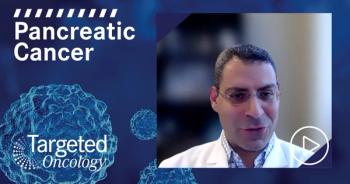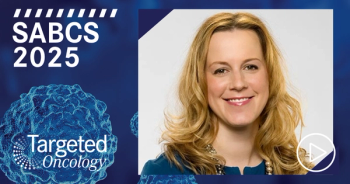
Tolaney’s ‘What to Watch’: Key Breast Cancer Abstracts at ASCO 2025
Sara M. Tolaney, MD, MPH, highlights a transformative year for breast cancer research at this year’s ASCO Annual Meeting.
Sara M. Tolaney, MD, MPH, chief of the Division of Breast Oncology and the associate director of the Susan F. Smith Center for Women’s Cancers at Dana-Farber Cancer Institute; as well as an assistant professor of medicine at Harvard Medical School, highlights a transformative year for breast cancer research at this year’s
"I think there’s so much exciting data getting presented at ASCO. I think, for breast cancer, it is a very exciting year,” says Tolaney.
A key focus is the SERENA-6 study (NCT04964934), which explores using circulating tumor DNA to detect resistance and guide therapy changes before radiographic progression. This could mark a potential paradigm shift in treatment strategy.
“This is a paradigm shift in the way of thinking in oncology. It is not the way we currently practice. We wait till scans show growth, and then we switch therapy. And so this would be, again, a game-changer. So I think that will be really exciting to see,” Tolaney shares.
She also points to promising data on a new oral PROTAC estrogen receptor degrader, offering a potential alternative to fulvestrant (Faslodex) for patients with endocrine-resistant disease.
“There is data about a new oral PROTAC being compared [with] fulvestrant in patients who previously progressed on endocrine therapy. So this could potentially allow for a new oral anti-estrogen drug, which would be tremendous for our patients,” she explains.
Additionally, findings from the 2 CompassHER2-pCR trial (NCT04266249) explore de-escalated neoadjuvant therapy using taxane, trastuzumab (Herceptin), and pertuzumab (Perjeta), alongside biomarker-driven insights from the HER2DX assay, which may help personalize preoperative regimens.
“I think it will be important because we will also see biomarkers getting presented—particularly the HER2DX assay—which could help us figure out how to think about what regimen to give patients in the pre-op setting,” she says.
Overall, she anticipates significant advances that could lead to more precise and patient-friendly treatment options.









































